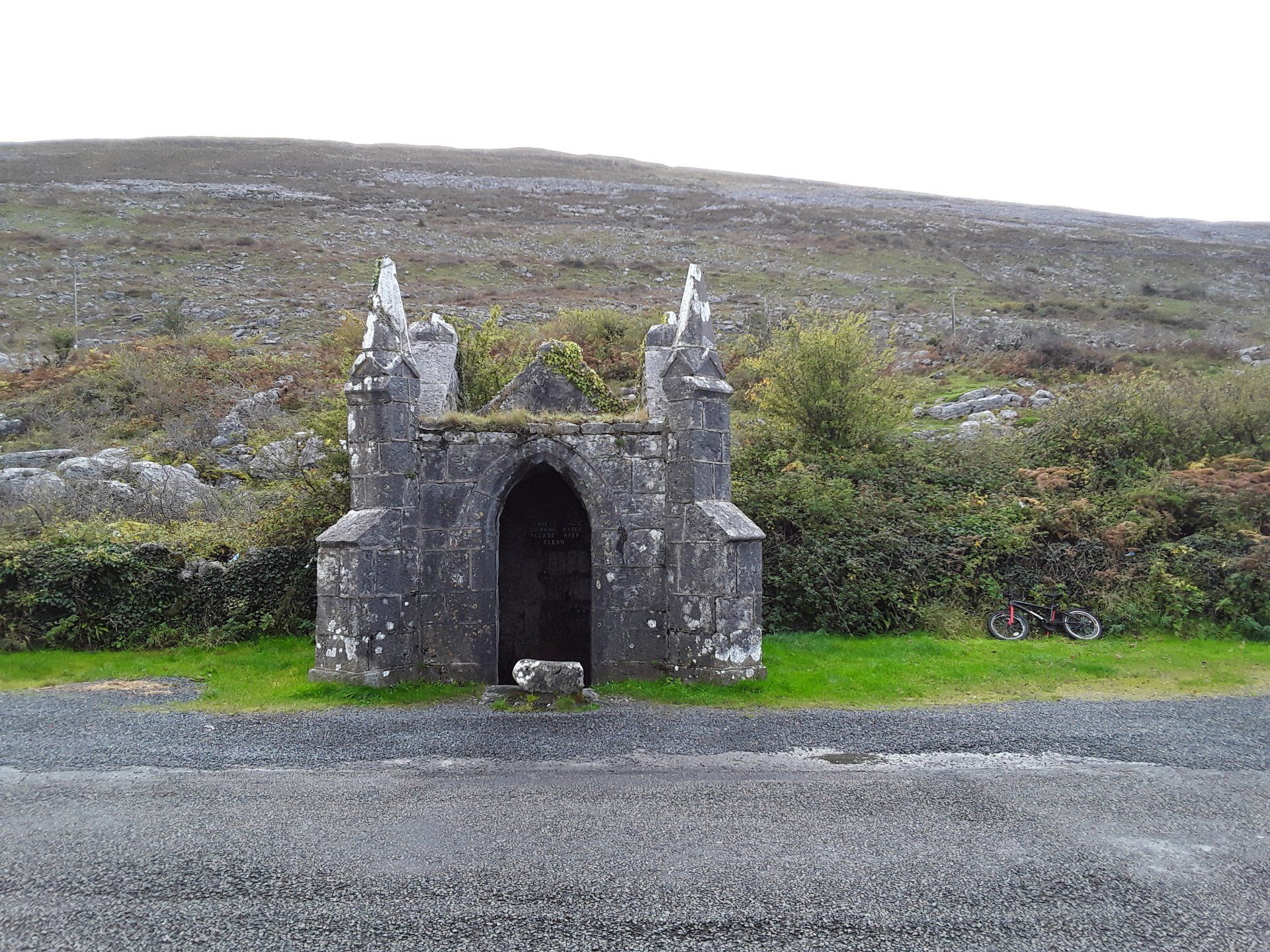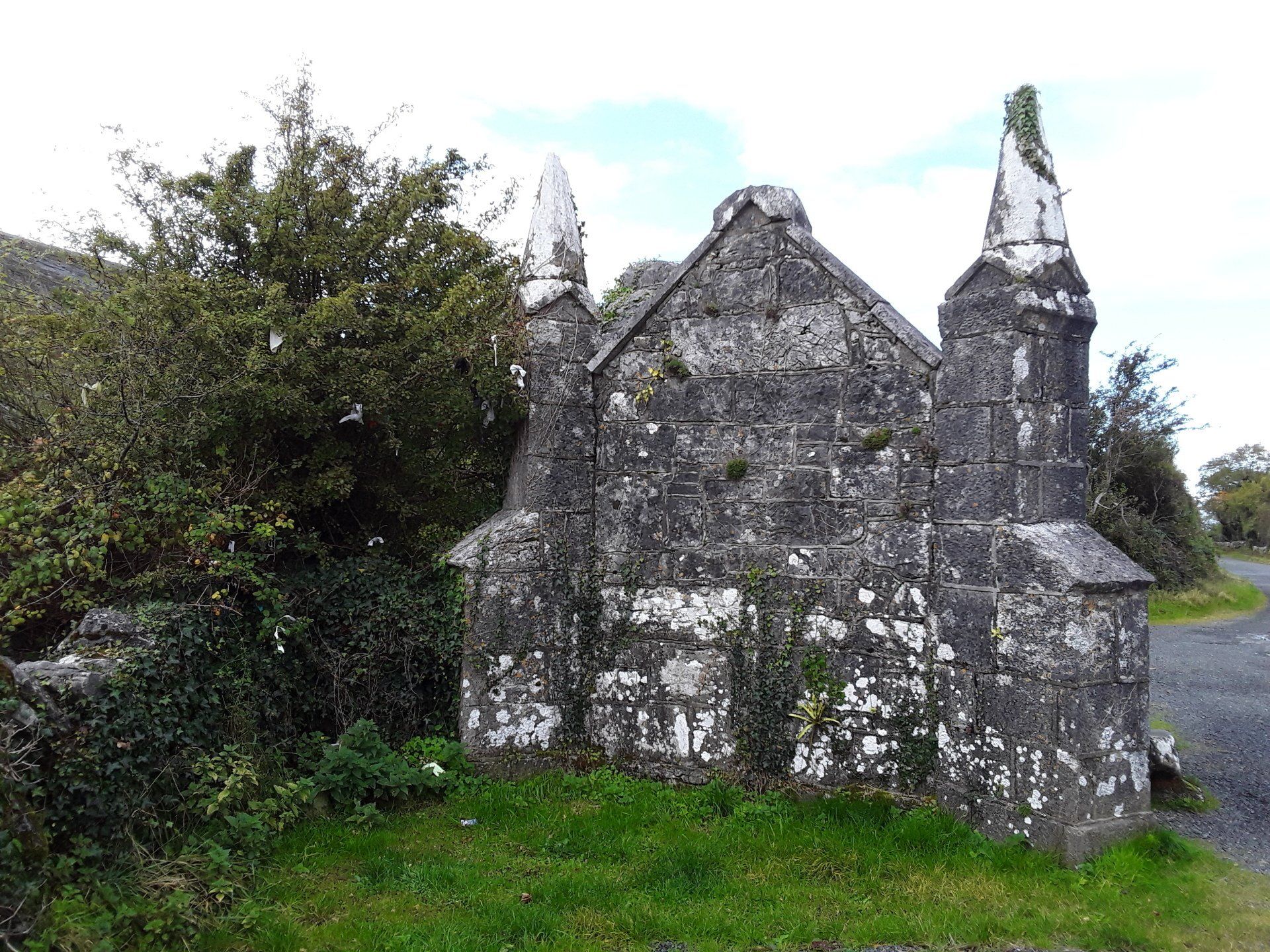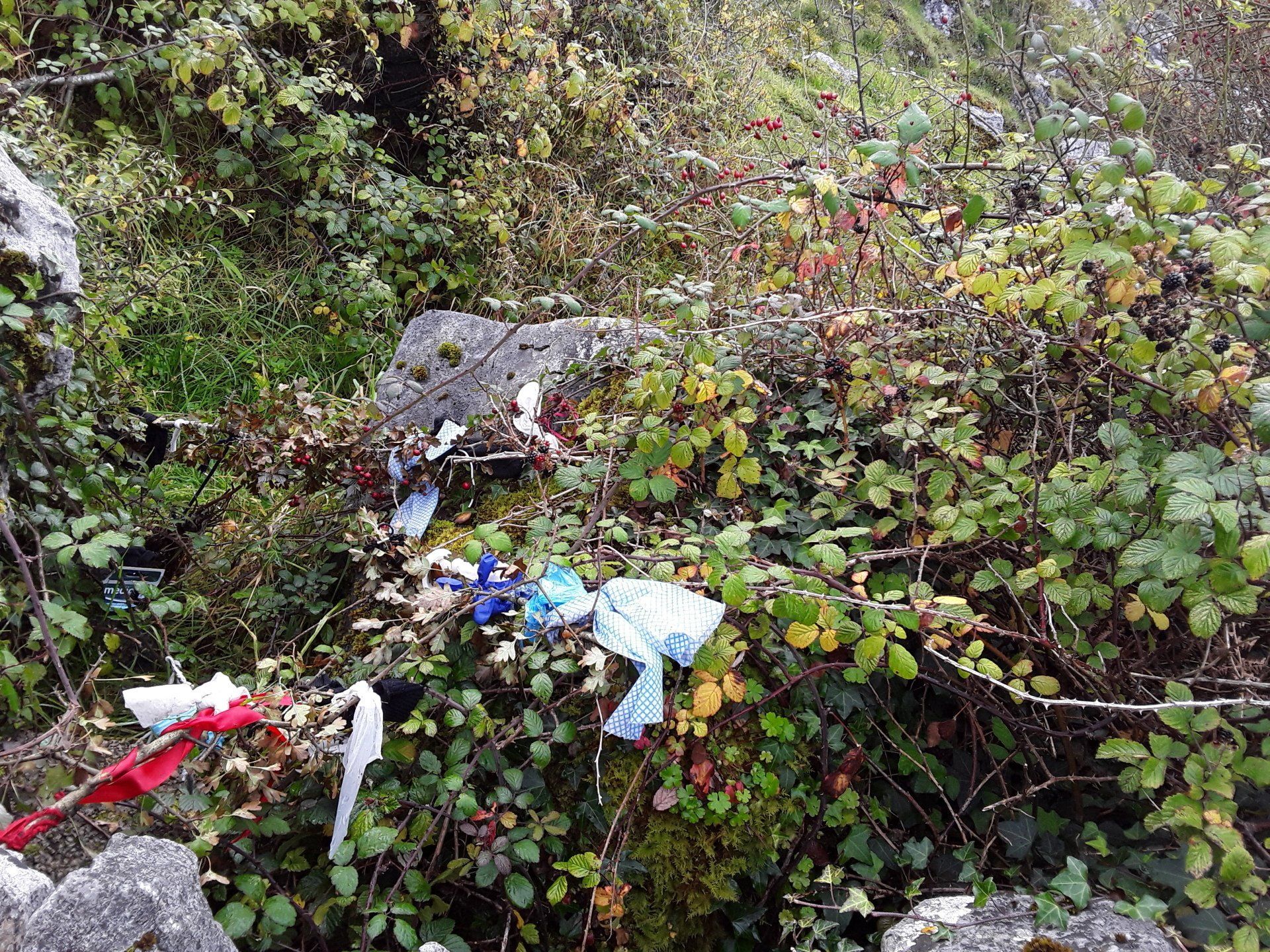Pinnacle Well, Gleninagh, County Clare

‘Tobar
Chornáin, near Black Head.
Perhaps the most decorative of the many wells, holy or otherwise, which dot the
Burren’.
Peadar O’Dowd.
Tobercornan was a natural spring before it was ‘welled’.
One presumes it was welled when it was canopied.
That
happened circa 1860 and so thereafter Gleninagh North had two canopied wells.
The other well is Tobernacrohaneeve, Tobar Na Chroíche Naoimh,
only one km away.
Is Gleninagh North the only townland in all of County Clare with, not one, but
two canopied wells?
Officially known as Tobercornan, Tobar Chornáin.
Now commonly known as
the Pinnacle Well.
Discounted by some as not being holy historically though Cooke did state in the
1840s that ‘The neighbouring peasantry call it a Blessed Well.’

Was the project an elite extravagance in order to compete with the nearby local heart land of ‘indigenous spirituality’, Tobernacrohaneeve?
Or alternatively was the canopy designed as a facsimile in miniature of St
John’s R.C. church in nearby Ballyvaughan - built in the same period and in the
same Gothic revival style?

The whitethorn tree has been ‘culturally modified’, mainly with ribbons. Not always so. The tree was entirely undecorated in a 1980 photo by Peadar O’Dowd.
There are nine townlands in the parish of Gleninagh. The parish was entirely owned by two individuals in the mid-1800s. Whilst more than 90% of the housing stock was fourth classification, ‘miserable hovels’, around about that time*, a small body of water was being housed in a most elegant way.
One could argue
that ‘The Pinnacle’ is, amongst other things, a monument to profound
inegalitarianism.
Fanagí slán. Stay safe.
*90.4% of the housing stock in the parish of Gleninagh was classified as fourth classification according to the 1841 census.



